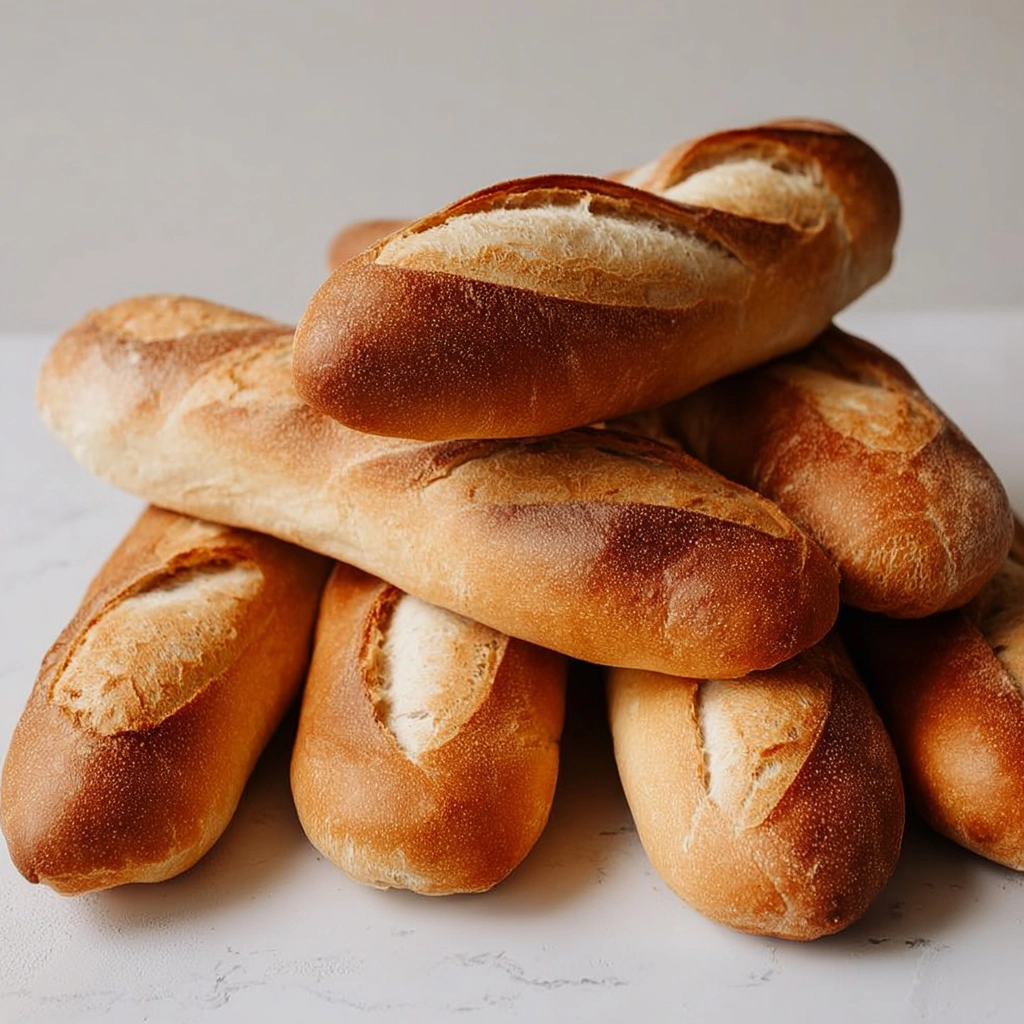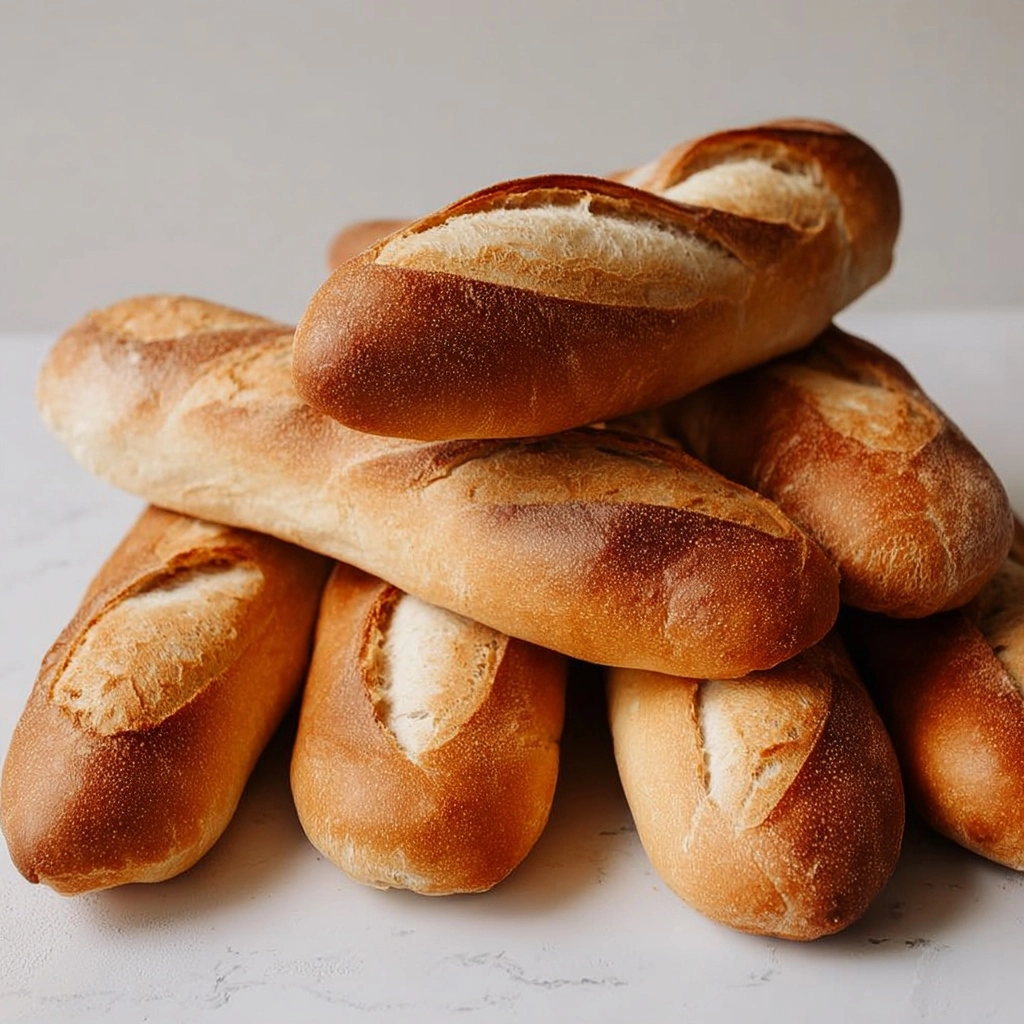There’s just something utterly magical about baking your own bread, and nowhere is that more true than with Homemade French Bread. This crusty, golden loaf fills your kitchen with a yeasty aroma that’s hard to resist, and from the very first slice—with its pillowy, tender interior—you’ll wonder why you ever bought bread from the store. Whether you’re a seasoned baker or new to making bread from scratch, this recipe is a truly rewarding kitchen adventure that results in a boule or baguette worthy of your favorite French bistro.

Ingredients You’ll Need
The beauty of Homemade French Bread is in its simplicity—each ingredient is chosen for a reason, working together to create that classic flavor, chewy crumb, and beautiful golden crust. Don’t overlook the small things, like the temperature of the water, as every detail brings this bread to life!
- All-purpose flour: Gives the bread its classic chewy structure and slightly nutty flavor—don’t forget extra for kneading!
- Active dry yeast: The rising power behind every lofty, airy slice—make sure it’s fresh so your bread lifts beautifully.
- Warm water: Activates the yeast perfectly; keeping it at the right temperature is key for a light and fluffy crumb.
- Sugar: Feeds the yeast and gives the crust a hint of golden color and delicate sweetness.
- Salt: Brings out the flavor in the bread and helps strengthen the dough’s overall structure.
- Olive oil (optional): Softens the crust for a tender bite—add it if you prefer a silky interior.
How to Make Homemade French Bread
Step 1: Activate the Yeast
Start by combining your warm water, sugar, and active dry yeast in a small bowl. This little science experiment is the secret to creating a sky-high loaf—within about eight minutes, you’ll notice the mixture turning foamy, which means your yeast is lively and ready to rise. If you don’t see bubbles or foam, it’s worth starting over with fresh yeast so your loaf gets the best start possible!
Step 2: Mix Up the Dough
Grab your biggest mixing bowl and add the flour and salt. Pour in that bubbly yeast mixture and stir everything together until a shaggy dough forms. This is where the magic starts: you’ll see the dough come together with just a spoon, looking a bit rough but full of potential!
Step 3: Knead for Perfection
Turn the dough out onto a lightly floured surface. Now, channel your inner French baker and knead for about eight to ten minutes. Use the heels of your hands to stretch and fold the dough over. You’ll know you’re done when the dough feels smooth, elastic, and bounces back when poked gently.
Step 4: The First Rise
Place your kneaded dough into a lightly oiled bowl (a touch of olive oil does wonders here), cover with a clean tea towel, and let it rise in a warm spot for about one to one and a half hours. By the end of this step, your dough will have doubled in size—a clue that your Homemade French Bread is well on its way!
Step 5: Shaping the Loaf
Gently punch down the risen dough to release some of the built-up gas, then shape it into a long, graceful loaf (or two smaller ones for more crusty surfaces!). Place your shaped loaf on a parchment-lined baking sheet for a smooth transfer to the oven.
Step 6: The Second Rise
Once shaped, cover your dough loosely and let it rest again for another 30 to 40 minutes. This brief second rise gives the bread a tender, light texture and helps it spring up in the oven.
Step 7: Score and Bake
Preheat your oven to a toasty 220°C (425°F). With a sharp knife, make three or four quick, diagonal slashes across the top of your loaf. This classic French bread look lets the loaf expand beautifully as it bakes. For an extra-crisp crust, place a small, oven-safe dish filled with water on the bottom rack—steam is key to that authentic crunch!
Step 8: Cool and Slice
After 25 to 30 minutes in the oven, your bread should be golden brown and sound hollow when tapped on the bottom. Let it cool on a rack—just a bit—before slicing. The hardest part is resisting the warm, irresistible aroma!
How to Serve Homemade French Bread

Garnishes
Dress up slices of your Homemade French Bread with soft butter, a sprinkle of sea salt, or a drizzle of olive oil. For a fancier touch, try herbed compound butter or even a swipe of garlic confit. Each option lets the bread’s warm, yeasty flavor shine.
Side Dishes
Pair your bread with hearty stews, creamy soups, or fresh salads for a satisfyingly complete meal. There’s almost nothing better than dunking a thick piece into tomato basil soup or serving it next to a cheese board for an irresistible starter.
Creative Ways to Present
Slice your loaf diagonally for crostini, cube it for croutons, or turn it into open-faced sandwiches loaded with toppings. Homemade French Bread makes the ultimate base for bruschetta, and looks stunning served in a rustic wooden basket at any meal.
Make Ahead and Storage
Storing Leftovers
Keep any extra Homemade French Bread at its best by wrapping it in a clean kitchen towel or storing it in a paper bag once fully cooled. This helps preserve the crust’s crispness while keeping the crumb from drying out too quickly. Enjoy within two days for the freshest result!
Freezing
To freeze, let the loaf cool completely, then wrap it tightly in plastic wrap and place inside a zip-top bag. Homemade French Bread freezes beautifully for up to two months. When cravings strike, thaw at room temperature and refresh with a few minutes in the oven.
Reheating
Bring chilled or thawed bread back to life by placing it in a hot oven (about 180°C / 350°F) for 8 to 10 minutes. The crust re-crisps nicely and the inside gets just warm enough—almost as good as freshly baked!
FAQs
Why didn’t my Homemade French Bread rise as much as expected?
This is usually a case of old or inactive yeast. Always check the expiration date and ensure your water isn’t too hot (which can kill yeast) or too cold (which can slow it down). Fresh yeast and proper temperature guarantee a lofty loaf.
Can I use bread flour instead of all-purpose flour?
Absolutely! Bread flour will give your Homemade French Bread a slightly chewier texture and bigger holes (think bakery-style), but all-purpose flour still makes a delicious, classic loaf.
Is it necessary to add olive oil?
Nope! Olive oil is optional; it creates a softer crust and adds a subtle richness. If you prefer a classic, crustier French bread, simply skip it and follow the rest of the recipe as written.
How can I get that authentic crackly French bread crust?
The secret is steam! Placing a pan of water on the bottom oven rack while baking increases humidity, resulting in that signature crisp, crackly crust that makes Homemade French Bread so irresistible.
What’s the best way to slice this bread without squishing it?
Let the bread cool a bit before slicing and use a serrated bread knife. This keeps the crumb fluffy and the slices even—plus, there’s nothing quite like warm bread that actually keeps its lovely shape!
Final Thoughts
There’s a special kind of joy in pulling a golden loaf of Homemade French Bread from your own oven. So, gather a few simple ingredients and give this recipe a try—I promise, every bite will transport you straight to a cozy Parisian café!

